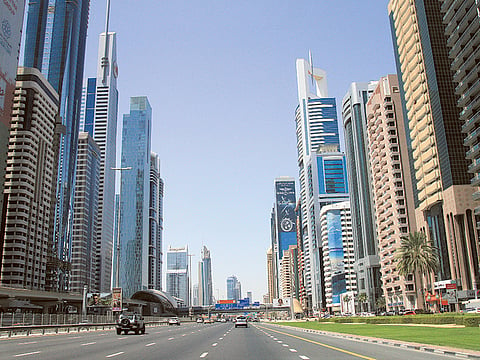Change needed to inject more funds into UAE realty
It requires UAE developers to show they have wherewithal to take on and finish projects

The dramatic rise of construction and real estate over the past two decades has been one of the stories of our time. Fuelled by cheap money and ambitious vision, developers raced against the clock to launch and build a dazzling array of projects to fill our skyline.
However, devastating the first boom-bust cycle was in 2008-10, property values and construction activity rebounded rapidly as liquidity continued to flow to the sector. Now, as the era of cheap money draws to a close (the jury is still out on this, given the continuing reduction in interest rates), stalled projects have once again reared their heads in cities across the world, from Melbourne to London to Shanghai.
Time for an overhaul
As the contagion spreads, investors, contractors, developers and banks start to suffer the consequences of this lack of liquidity. Even as suggestions abound to ease lending requirements proliferate, the real question to ask is whether there is an overhaul required in the real estate development model from a regulatory perspective.
Development projects in Dubai predominantly rely on off-plan sales. As off plan has moved towards a post-handover paradigm, developers have increasingly started to rely on bank financing as a way to keep the liquidity flowing. However, in the event of defaults from the investor, the risk inherent in projects start to rise, causing delays as well as, in extreme cases, stalling.
This brings into mind the quote by former city planner of London, Peter Rees, who famously (though somewhat facetiously) said “you should never trust a bank with property or a property developer with money”.
Chasing sustainability
Clearly the key dynamic and catchphrase over the last few years has been “sustainable development”. It is important to distillate this definition: for all practical purposes, this means development that is viable for all stakeholders.
This can only be achieved if the building permit that has to be issued is in consonance with demonstrating financial close of the project. After purchasing the land parcel, typically, it takes about 12 months to achieve financial close (demonstrated through a combination of off-plan sales contracts and construction finance).
This is not an easy task for most developers, especially smaller ones, who will struggle to demonstrate this kind of deep pockets. However, only under this paradigm will there be an acceleration of consolidation among developers, as well as clarity for stakeholders and regulators, who will be able to ascertain developer margins, the margin of safety, as well as bank lending lines in place, if any.
Contractors will then be able to take on the job of construction with increased confidence, knowing that the risk of delayed payments is kept to a minimum. Off-plan buyers who then enter into a contract will be able to do so in the full knowledge that their first payment will only be released once the financial close has been achieved.
The entire pipeline of the value chain is preserved in this process, enabling for a smooth functioning of the most critical sector of the economy.
Multiple implications
The above mechanism has multiple implications. First and foremost, it exerts tremendous pressure on the developer to capitalise the project, implying that the supply pipeline will automatically shrivel. Smaller developers will accelerate their efforts towards consolidation in order to achieve compliance, and investors will not commit capital until this is demonstrated. “Hot money” flows will then move towards reviving stalled projects, distressed assets and/or towards credible developers thereby making investors and stakeholders in those projects whole and ensuring that capital is allocated more efficiently. Over the medium term, as market forces assert themselves, asset prices will restore to their fair value levels and the level of contagious cynicism will dissipate.
The tale of the development cycle has been as exciting, vicious and breathtaking as gold rushes of the past. Just because the rush has mutated to other forms does not mean that nobody wants the gold anymore.
Perhaps the most critical page of any historical narrative is what the role of the regulators has been in alternatively clamping down and relaxing constraints to coax growth whilst taking into cognisance of all the stakeholders. Liquidity is of the essence for any sustainable development model, and its channelisation into effective areas of asset production is the most viable way that regulators can harness productivity for the next decade.
Sameer Lakhani is Managing Director at Global Capital Partners.
Sign up for the Daily Briefing
Get the latest news and updates straight to your inbox



